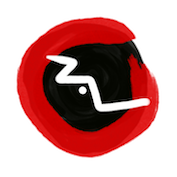Visiting Sarajevo
This is a blog post by Professor Paul Coldwell, written about the drawing workshop held in Sarajevo, Jan 2018
In 1996 on 4th April, I heard a radio broadcast from Martin Bell, signing off as the BBC war correspondent and reflecting on the tragedy of the war in Bosnia. This, along with the daily news reports of the war, touched me in ways I hadn’t expected. Over the next year, in my studio in London I made an installation of some 15-16 bronze objects Abandoned Landscape and an artists’ book With the Melting of the Snows as a response in which I imagined the siege of Sarajevo.
Now 20 years later I have had the opportunity to visit Sarajevo for the first time and to spend time at the Museum of History as part of the Art & Reconciliation project. I was also fortunate to be guided by Dr Paul Lowe who as well as being one of the principle investigators for the project, witnessed the war first hand as a photographer and who has so movingly documented the horror of the conflict through his camera lens.
The reason for my visit was twofold; firstly, to conduct a drawing workshop with high school pupils and secondly, to carry out some research both in the Museum of History and in Sarajevo in general in order to make new work for an exhibition at the museum in June.
For the drawing project I had asked everyone to bring a shoe and with only a very brief introduction I asked them all to start drawing. There were around 15-16 teenagers and I wanted them to discover how, through drawing such an everyday object, they might be able to instill it with character and personality.
Shoes represent something which is both common and specific since through wear, the shoe takes on the shape of the owner and can therefore suggest a life lived. Over the period of three days, these drawings developed from being individual drawings, to being part of a large composite drawing measuring over 5 meters in length. Here, the shoes were accompanied by lines, as in contour maps, in order to explore the interconnectivity of things, and by implication, of people. In the end the drawing spoke of individually bound together within a common mesh. Within the scope of the project, I wanted the pupils to explore how we can both celebrate difference while also being aware of common needs. We explored these ideas through other drawings including a large scale communal drawing which began with each transferring an enlarged version of their signature, around which drawings of shoes, and other objects including those on display in the museum were added.
The only formal aspect of the workshop was a talk I gave on my work and how I have worked with museums and collections. On other days, I spent time in the museum and on the streets and in many ways the two were directly connected. Firstly, since it was really cold, and with little heating in the museum, it was just as cold inside or out. Secondly, the city still bears the scars of the conflict, both in evidence of damage still visible on certain buildings and in the manner in which deaths are marked by ‘Sarajevo Roses’, resin filled craters in the pavements like blood stains. About 50 meters from the museum as a memorial stone to Nermin Divovic a little boy aged just 7, shot dead by a sniper in the notorious ‘snipers alley. In the museum, was a small sweater that he had worn, and in which he was photographed playing in the snow. This sweater seemed to represent the futility of war and the tragedy of a life cut short. I am now in the process of commissioning replica sweaters, one for each of his seven years to be displayed in the exhibition in June. The exhibition will also be an opportunity to show the installation I had made 20 years ago, now in the place I imaged.
Visiting Sarajevo was also an opportunity to listen to stories, many conversations with the director and her staff all brought home to me the real nature of life under siege. Amongst the artists I met, was Edin Numankadic. I visited his studio in the social housing complex and in the top of the building was a treasure chest of decades of work including floors covered by surreal boxes each filled with incongruous objects. On the drive to his studio he mentioned a Bosnia joke, in which a man running had his water bottles shot by a sniper to whom he screams, ‘Don’t shot the bottles, shoot me!!!!’. The plastic water bottles, so essential for survival during the seige, become in the joke, more important than the life of the carrier. This story has informed a small triptych that I have just cast in bronze in London, in the foundry at Chelsea and which I hope to show in Sarajevo in June.


